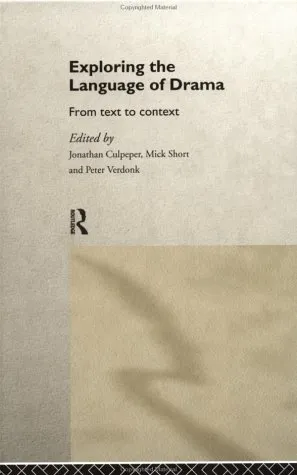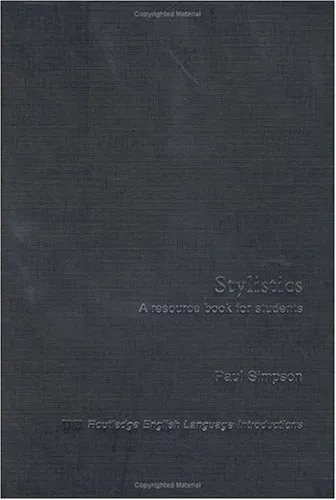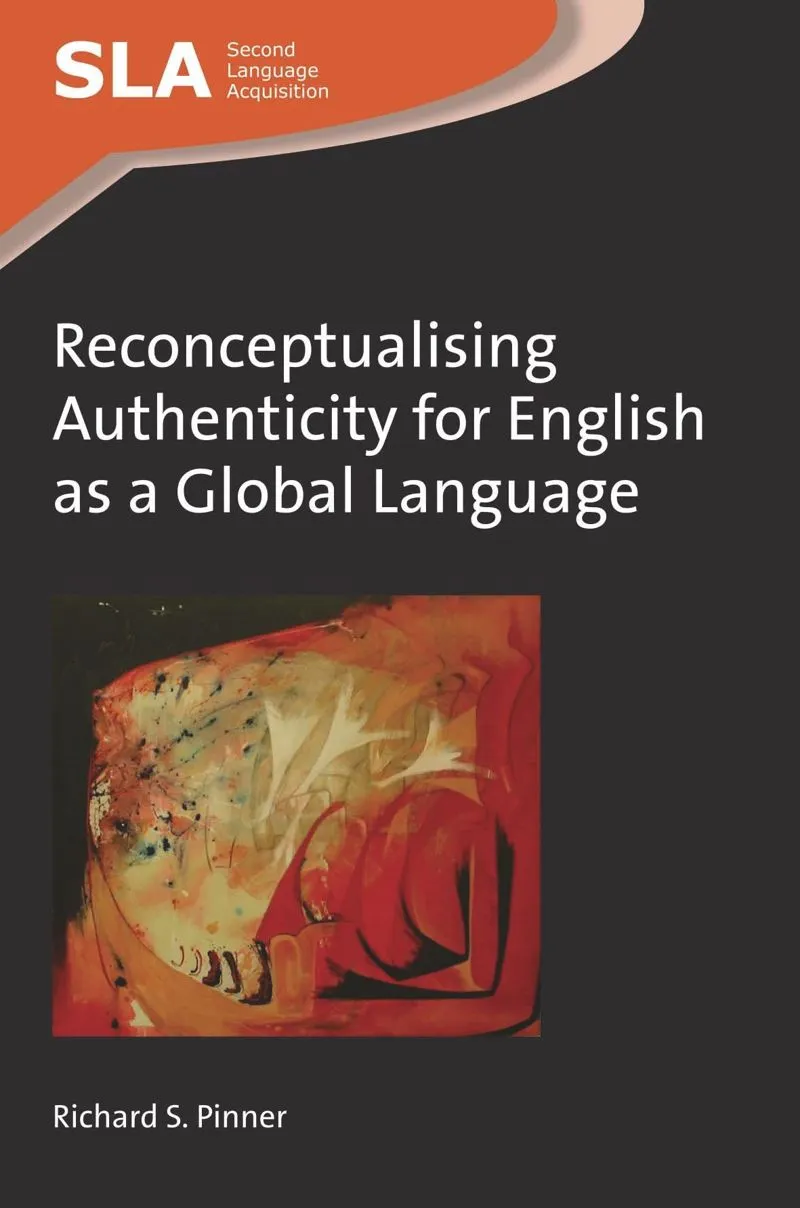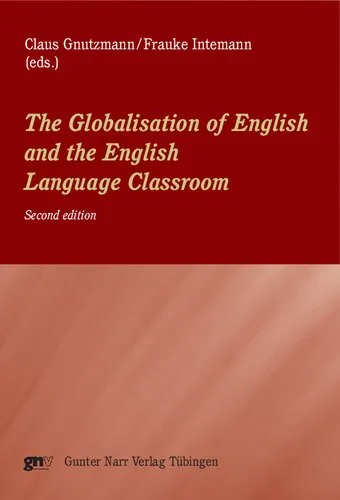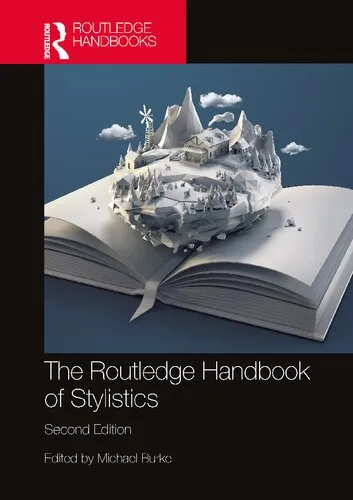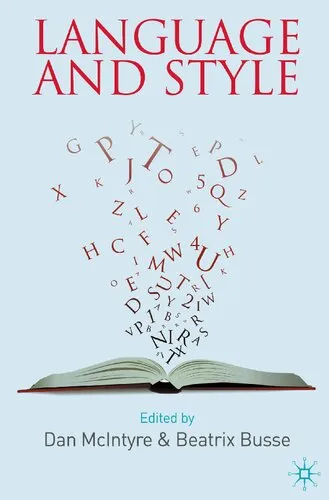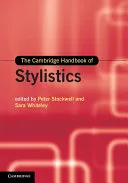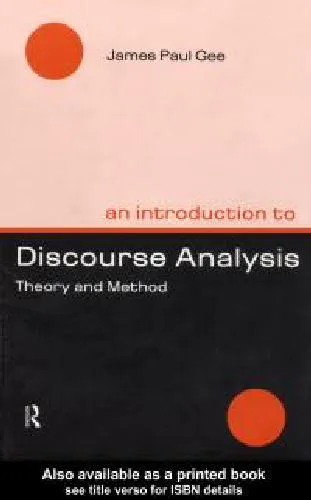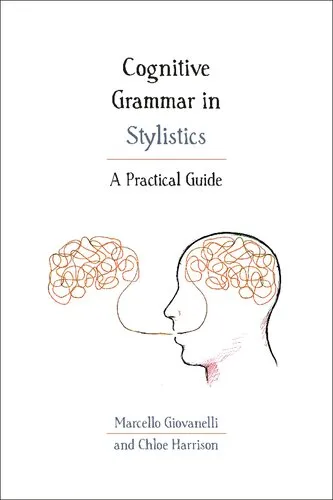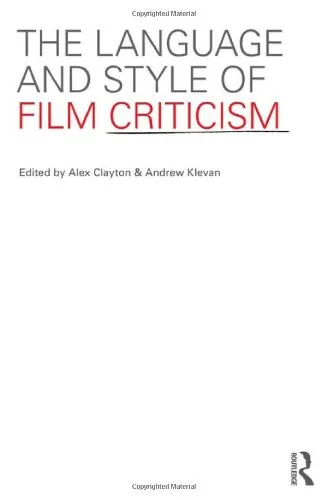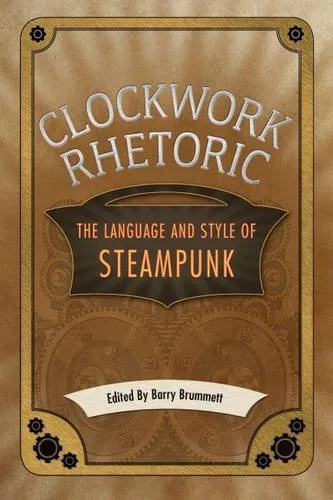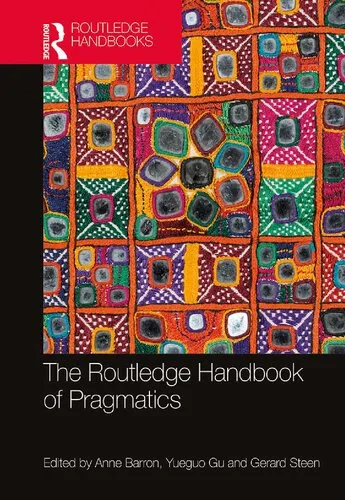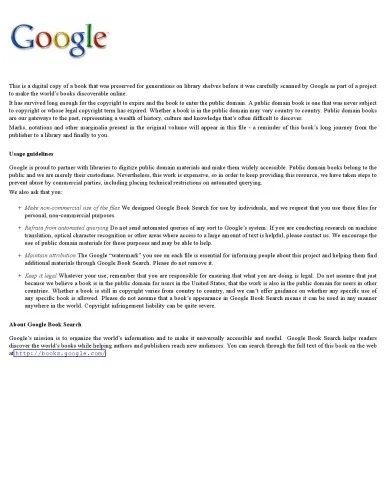Exploring the Language of Drama: From Text to Context (Interface)
4.4
بر اساس نظر کاربران

شما میتونید سوالاتتون در باره کتاب رو از هوش مصنوعیش بعد از ورود بپرسید
هر دانلود یا پرسش از هوش مصنوعی 2 امتیاز لازم دارد، برای بدست آوردن امتیاز رایگان، به صفحه ی راهنمای امتیازات سر بزنید و یک سری کار ارزشمند انجام بدینکتاب های مرتبط:
خلاصه تحلیلی کتاب
کتاب Exploring the Language of Drama: From Text to Context (Interface) یکی از منابع ارزشمند در حوزه مطالعات زبانشناختی و تحلیل آثار نمایشی است که به بررسی لایههای زبانی، گفتمانی و تعاملی در متنهای نمایشی میپردازد. نویسندگان این اثر با رویکردی میانرشتهای، دو محور اصلی را در کانون توجه قرار دادهاند: تحلیل دقیق ساختارهای زبانی در بطن متن و واکاوی تأثیر بستر اجتماعی، فرهنگی و تاریخی بر تولید و دریافت معنا در آثار نمایشی.
این کتاب با پیوند دادن روشهای تحلیل متن به دیدگاههای Contextual، میکوشد تا فهمی جامعتر از فرایند معناسازی در صحنههای نمایشی ارائه دهد. خواننده با مطالعه این اثر میتواند از زوایای تازهای به روابط میان شخصیتها، دیالوگها و ساختارهای کنش نمایشی بنگرد؛ از سطح واژه و جمله، تا ساختارهای روایی و تعاملات گفتمانی که هویت و معنا را شکل میدهند.
یکی از ویژگیهای شاخص این کتاب، معرفی Frameworkهای تحلیلی متنوع برای بررسی زبان نمایش، بهویژه ترکیب دیدگاههای Discourse Analysis با رویکردهای Performance-oriented است. این رویکرد، کتاب را به پلی میان تحلیل نوشتاری و درک چندبعدی اجراهای زنده بدل میکند.
نکات کلیدی و کاربردی
این کتاب برای پژوهشگران، دانشجویان و علاقهمندان به تحلیل زبان در نمایش، مجموعهای از نکات کلیدی و کاربردی را فراهم میآورد. نخستین نکته، اهمیت توجه به Context در کنار Text است؛ یعنی هر تحلیلی که صرفاً بر زبان تمرکز دارد، بدون در نظر گرفتن زمینه اجتماعی و فرهنگی، با محدودیت مواجه میشود.
نکته دوم، استفاده از ابزارهای Discourse Analysis برای کشف لایههای ضمنی معنا است. این ابزارها نه فقط در حوزه نمایش بلکه در تحلیل گفتوگوهای روزمره و متون ادبی دیگر نیز کاربرد دارند. سومین نکته، توجه به تعامل میان نویسنده، کارگردان و بازیگر در فرایند خلق معناست. این تعامل نشان میدهد که زبان نمایش، تنها محصول نویسنده نیست بلکه در بستر اجرا تکمیل و بازتعریف میشود.
نکته چهارم، بررسی نقش ساختارهای نحوی و واژگانی در القای احساسات و ساخت هویت شخصیتها است. در بسیاری از موارد، انتخاب یک واژه یا شکل جمله میتواند معنایی بنیادین در کل روایت ایجاد یا تغییر دهد. نکته پنجم، دعوت به نگاه انتقادی به متون نمایشی برای کشف الگوهای تکرارشونده، ارجاعات بینمتنی و دلالتهای فرهنگی نهفته.
نقلقولهای ماندگار
کتاب سرشار از جملاتی است که نگاه خواننده را به زبان و فرم نمایش دگرگون میکند. برخی از این جملات تبدیل به نقاط عطف فکری برای پژوهشگر میشوند و ارزش بازخوانی دارند.
هنر نمایش نه در بازنمایی صرف، بلکه در خلق فضای معناساز میان متن و اجرا است. نامشخص
هر واژه بر صحنه، پتانسیل تغییر روایت را دارد. نامشخص
Context، سکوتهای میان کلمات را پر میکند. نامشخص
چرا این کتاب اهمیت دارد
اهمیت کتاب Exploring the Language of Drama: From Text to Context (Interface) در آن است که شکاف میان نظریه و عمل را پر میکند. بسیاری از منابع زبانشناسی نمایشی یا صرفاً به تحلیل متن میپردازند یا فقط بر اجرا تمرکز دارند؛ اما این کتاب با ترکیب هر دو، تصویری جامع از فرایند معناسازی درام ارائه میدهد.
برای پژوهشگران، این اثر ابزاری است که بهواسطه آن میتوانند کاربرد نظریههای زبانی را در دنیای واقعی تئاتر بیازمایند. برای هنرمندان تئاتر، این کتاب دریچهای است به شناخت بهتر زبان، بهعنوان ابزاری اجرایی و خلاق. همچنین برای دانشجویان، یک منبع آموزشی ساختاریافته و عمیق است که مبانی نظری را با نمونههای عملی پیوند میدهد.
در دنیای امروز که مرز میان هنر و علوم انسانی روزبهروز کمرنگتر میشود، آثاری مانند این کتاب فرصت گفتوگوی میانرشتهای را فراهم میآورند و به توسعه بینشهای جدید کمک میکنند.
Analytical Summary
This authoritative work, Exploring the Language of Drama: From Text to Context (Interface), stands as a rigorous examination of how language operates in the medium of drama, bridging textual structures with performative realities. It invites serious readers—academics, theatre practitioners, and linguistic researchers—to engage with an interdisciplinary study that unpacks the intricate relationship between the written dramatic text and its interpretation within contextual frames.
The book addresses an essential question in dramatic discourse analysis: how do lexical choices, syntactic forms, and pragmatic cues shape audience perception and theatrical meaning? Through a series of analytical frameworks, it explores how characters, dialogue, and stage directions combine to produce layered communicative acts. This interaction between text and performance is mapped with scholarly precision, making it a valuable resource for the fields of theatrical linguistics and performance studies.
Information unavailable regarding the original publication year due to no reliable public source. Nevertheless, the work’s impact and relevance continue to resonate within contemporary scholarship. Its inclusion in the Interface series signals its place among other distinguished interdisciplinary contributions, encouraging sustained analytical engagement with drama as both literature and a live art form.
Key Takeaways
Readers will come away from Exploring the Language of Drama: From Text to Context (Interface) equipped with a clear understanding of how drama’s linguistic dimension informs and transforms its performative context.
First, the book integrates methods from discourse analysis to investigate patterns of communication specific to drama scripts and performance exchanges. Second, it demonstrates how meaning in theatre is not confined to dialogue but emerges through interplay between language, staging, and audience interpretation. Third, it offers tools for bridging the gap between close textual reading and broader socio-cultural considerations.
By combining theoretical detail with accessible examples, the authors have enabled readers to translate abstract linguistic concepts into concrete theatre analysis. This dual approach makes the work not only a scholarly contribution but also a practical guide for improving dramatic interpretation and production.
Memorable Quotes
Within the text, certain reflections highlight the deeper philosophy and approach the book embodies.
“In drama, language is never inert; it is action, it is reaction.”Unknown
“The contextual frame transforms the spoken line into an event in its own right.”Unknown
“Text and performance are two halves of the same linguistic whole.”Unknown
Why This Book Matters
Exploring the Language of Drama: From Text to Context (Interface) is an indispensable reference for understanding the convergence of language and theatre.
In an age where interdisciplinary study is increasingly valued, this book provides a clear methodological roadmap for examining drama as both a linguistic artifact and a performative experience. By articulating how spoken and staged elements intersect, it empowers scholars and practitioners to push beyond traditional literary analysis into a dynamic investigation of live, embodied meaning.
For educators, it offers a framework to teach students how to balance textual fidelity with creative adaptation. For researchers, it provides a structured analytical lens for exploring how cultural, social, and historical contexts influence dramatic production and reception.
Inspiring Conclusion
For those committed to deepening their grasp of drama's communicative power, Exploring the Language of Drama: From Text to Context (Interface) offers a path rich with analytical clarity and contextual insight.
This work embodies the belief that drama is a living exchange between text and audience, crafted through linguistic choices and contextual framing. Its balance of scholarly depth and practical application makes it a worthy addition to any academic library or theatre practitioner’s reference shelf.
Readers are encouraged to read, share, and discuss the findings and approaches presented, ensuring that the nuanced understanding of dramatic language continues to inform both scholarship and stagecraft for years to come.
دانلود رایگان مستقیم
شما میتونید سوالاتتون در باره کتاب رو از هوش مصنوعیش بعد از ورود بپرسید
دسترسی به کتابها از طریق پلتفرمهای قانونی و کتابخانههای عمومی نه تنها از حقوق نویسندگان و ناشران حمایت میکند، بلکه به پایداری فرهنگ کتابخوانی نیز کمک میرساند. پیش از دانلود، لحظهای به بررسی این گزینهها فکر کنید.
این کتاب رو در پلتفرم های دیگه ببینید
WorldCat به شما کمک میکنه تا کتاب ها رو در کتابخانه های سراسر دنیا پیدا کنید
امتیازها، نظرات تخصصی و صحبت ها درباره کتاب را در Goodreads ببینید
کتابهای کمیاب یا دست دوم را در AbeBooks پیدا کنید و بخرید
1264
بازدید4.4
امتیاز0
نظر98%
رضایتنظرات:
4.4
بر اساس 0 نظر کاربران
Questions & Answers
Ask questions about this book or help others by answering
No questions yet. Be the first to ask!
